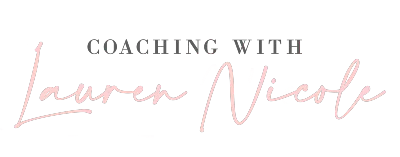Blogs

How are Habits Formed and How to Change Them?
How are Habits Formed and How do we Change Them?
As I am sitting in a coffee shop thinking about the time I thought I wanted to stop having caffeine and how I was going to break this habit, I think about the countless conversations I have with clients from breaking negative thinking patterns to snacking behavior and several others.
In order to change or break a habit we have to know how and why habits get developed in the first place.
A widely studied concept is the psychology pattern known as the “Habit Loop.”
“The Habit Loop is a neurological loop that governs any habit. The habit loop consists of three elements: a cue, a routine, and a reward. Understanding these elements can help in understanding how to change bad habits or form better ones.” – Duhigg, C. (2012).
Let’s break this sequence down to further understand each aspect:
The cue for a habit is anything that triggers or prompts the behavior that has turned into the habit. Cues most generally fall under the following categories: a location, a time of day, other people, an emotional state or reaction.
A habit’s routine is the actual behavior or aspect you want to change (e.g. negative self-talk when looking in the mirror, snacking mindlessly).
The reward is the aspect of the loop that brings an emotional response which keeps the habit in place such as a sense of calm, fullness, peace, happiness.
Because we perform this sequence thousands of times and ultimately want that reward, our complex mind actually moves these behaviors from the decision making part of our brain to the lower portion that drives “auto-pilot.
How can we break this?
Step 1: Know your triggers.
Aside from naming the habit you’d like to break, of course, is identifying your potential triggers so that you can disrupt the “cue” part of the feedback loop.
Start identifying the things you can do so this trigger isn’t as intense and when it comes realize the next move is the actual behavior you are trying to change.
Step 2: Develop and implement substitute behaviors.
Decreasing or completely wiping out a habit with no kind of replacement is a one way sign to trouble. We need some distraction, something that can help us feel productive and similar. The point is to have a go-to something when you feel the urge to give into your old habit; call a friend, go for a walk, journal.
Step 3: Rethink your rewards.
I always suggest and encourage clients to be curious and conscious about their rewards and what they are actually gaining.
Once we start to question this part of the loop, it gets easier to replace the habit with something that will reward us in a more meaningful way.
If there is something you want to change, dig a little deeper and start writing things down even for 5 minutes a day. There is a reason you are feeling the way you do and getting to the root of it is the first step to change.

